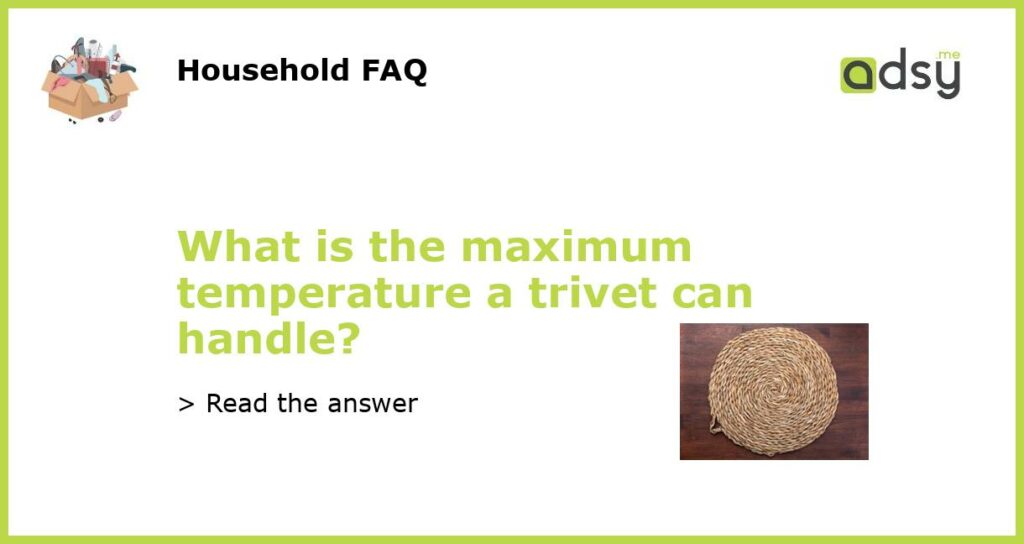Understanding the maximum temperature a trivet can handle
A trivet is a versatile kitchen tool designed to protect countertops, tables, and other surfaces from heat damage caused by hot pots, pans, and dishes. While trivets are essential for safe and efficient cooking, it is important to know their maximum temperature limit to ensure they are used correctly and prevent any accidents or damage. In this article, we will explore the factors that determine the maximum temperature a trivet can handle and provide guidelines for choosing the right trivet for your needs.
Factors that determine the maximum temperature of a trivet
The maximum temperature a trivet can handle is influenced by various factors, including the material from which it is made. Here are some common trivet materials and their maximum temperature limits:
Choosing the right trivet for your needs
When selecting a trivet, it is important to consider the specific needs and preferences of your kitchen. Here are some factors to consider:
Alternatives to trivets at high temperatures
In situations where you need to handle extremely high temperatures, such as when using a blowtorch or placing food directly from the oven onto the trivet, using a trivet alone may not be sufficient to protect your surfaces. In such cases, it is recommended to use additional heat-resistant materials or holders.
In conclusion, the maximum temperature a trivet can handle is influenced by various factors, including the material it is made of, the design, and the manufacturing process. It is crucial to understand these factors and choose a trivet that meets your specific needs and preferences. By using a trivet correctly and ensuring it is not exposed to temperatures beyond its limits, you can protect your surfaces and prevent any damage or accidents during cooking.






